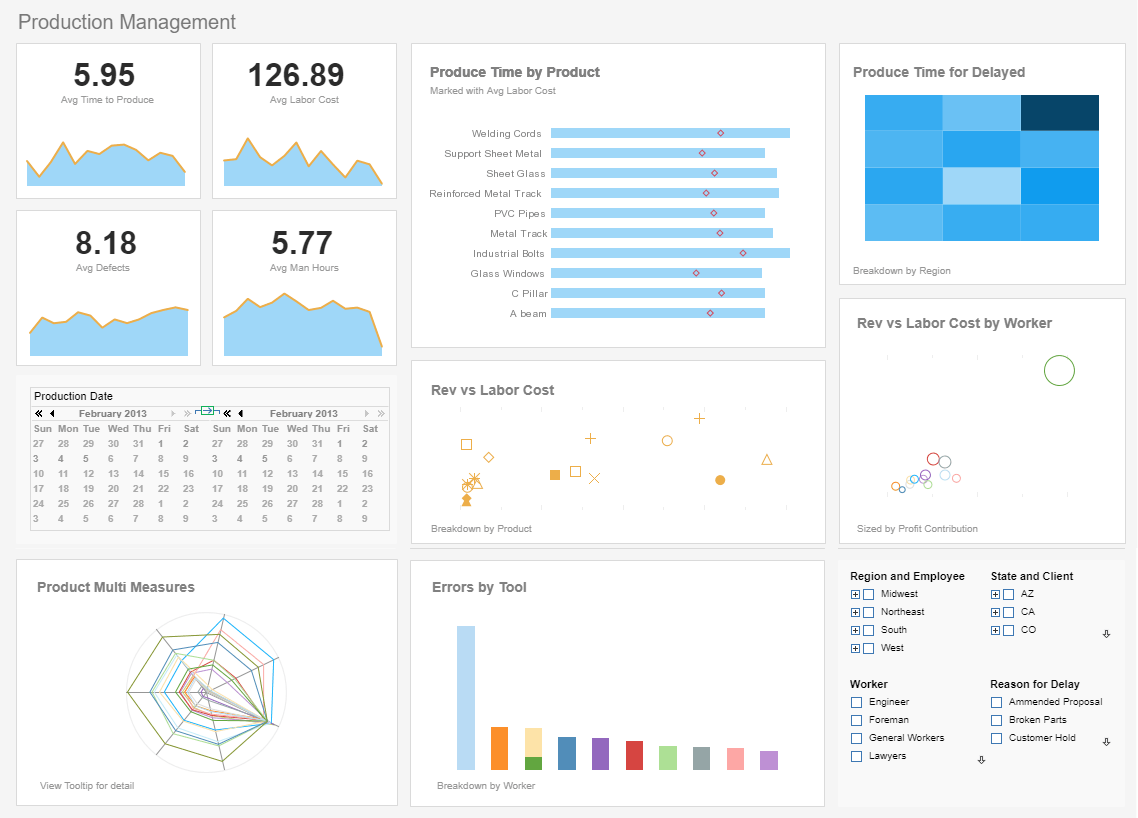A Progression from Reports to Dashboards
This is the continuation of the transcript of a Webinar hosted by InetSoft on the topic of "The Evolution from Information Publishing to Insight Discovery and Analytics." The speaker is Mark Flaherty, CMO at InetSoft.
And then, of course we have integration in order to pull data together. We have search as part of our experience. We have associative search so you can find answers with your data anywhere. And of course we have the great visualization that we built on top of that. And the result of this analysis is a focused and personal aspect of what we do. Think of it as a progression from reports, to dashboards, to apps. Typically you think of it this way. Reports enable you to view information, and that’s very much the model of publishing and viewing.
Dashboards allow you a certain amount of interaction, a certain amount of drill down, to find out what are the numbers that made the numbers. But apps are really about an exploratory interface and StyleBI can do all these things. We can do reports. For example, something like this is a straightforward report although a traditional type. With a dashboard that we could build with our tool would be similar, but we can drill down into it.
And this dashboard is typical of a lot of dashboards that I use. People like the gauges and want this sort of visualization. Very often if it’s the style of the visualization that's as important as the information to a lot of people that I find. And so, dashboard enables you to drill down. But the thing that StyleBI can do that is special is build something which is not just a report, not just a dashboard. It’s actually more like an application with interfaces that are very specific that lets you change the view of the data you see very easily.
| #1 Ranking: Read how InetSoft was rated #1 for user adoption in G2's user survey-based index | Read More |
Focused User Experience
Different aspects of the data provide a focused user experience that enables the user to explore many different hypotheses and add what I think is perhaps the most important button in the whole product which is the “clear” button. After I’ve gone down a whole set of hypotheses, this enables you to go back and forth between those hypotheses, but at some point just clear it all and get back to the beginning. And like the hunter-gatherer, let me refocus my thoughts starting from here’s the hypotheses to realizing ‘oh, it didn’t really take me anywhere.’ So, let's just start again with this ability to progress backwards and forwards through hypotheses and then just clear them all out. The ease of doing this is really critical.
Another area that I think is really important to what we do is the sheer aspect that we don’t just publish these reports. We don’t just publish apps. We provide a Wiki like experience for people to build, for people to come in, to collaborate, and to share work that other people have done, and even collaborate and share from within an application. And that’s really important because you start to build up the entire social conversation around the applications that have been built. It's not just a static report. It’s not just an interactive app. It's the start of social conversation around that.
The mobile aspect is also very important when a dashboard is published, and we just released support for the iPad. And that can be used in many different contexts. People who are highly mobile, that are sales professionals, that are in manufacturing, that are in retail, they’re clearly mobile in their work, but also for people who are normally in a desktop environment.
An interesting thing about our architecture for this is that it is exactly the same architecture as we have on the desktop. We have a server experience and the mobile and desktop experiences are entirely complementary, since they’re browser-based. So, what you get on the mobile application is not just a static view of the data, but it’s actually an exploratory interactive view of the data. So for example, a doctor investigating drug interactions can publish this for other people to consume, but what he’s really doing is publishing an app. And anybody else who says, “What about your research on drug investigations?” He can say, “Well, there’s an app for that”. Anyone can use that.
| Previous: Web Based Business Intelligence with or without it's Consent |


